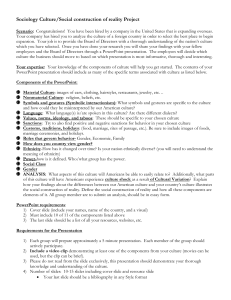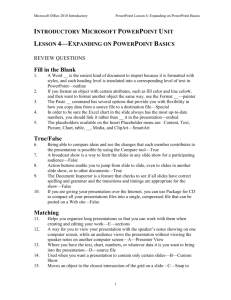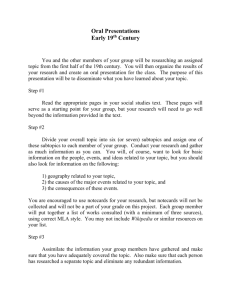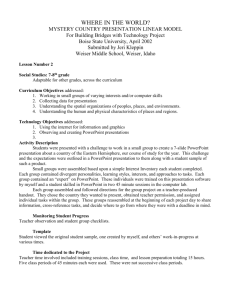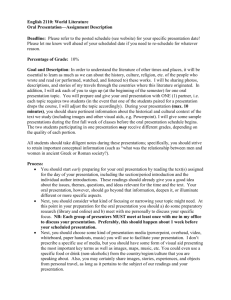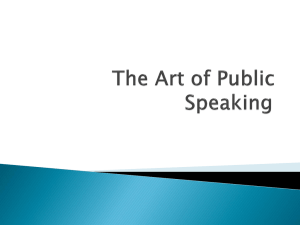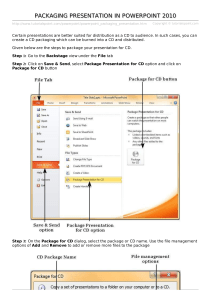Presentation Guidelines for PowerPoint Presentations
advertisement
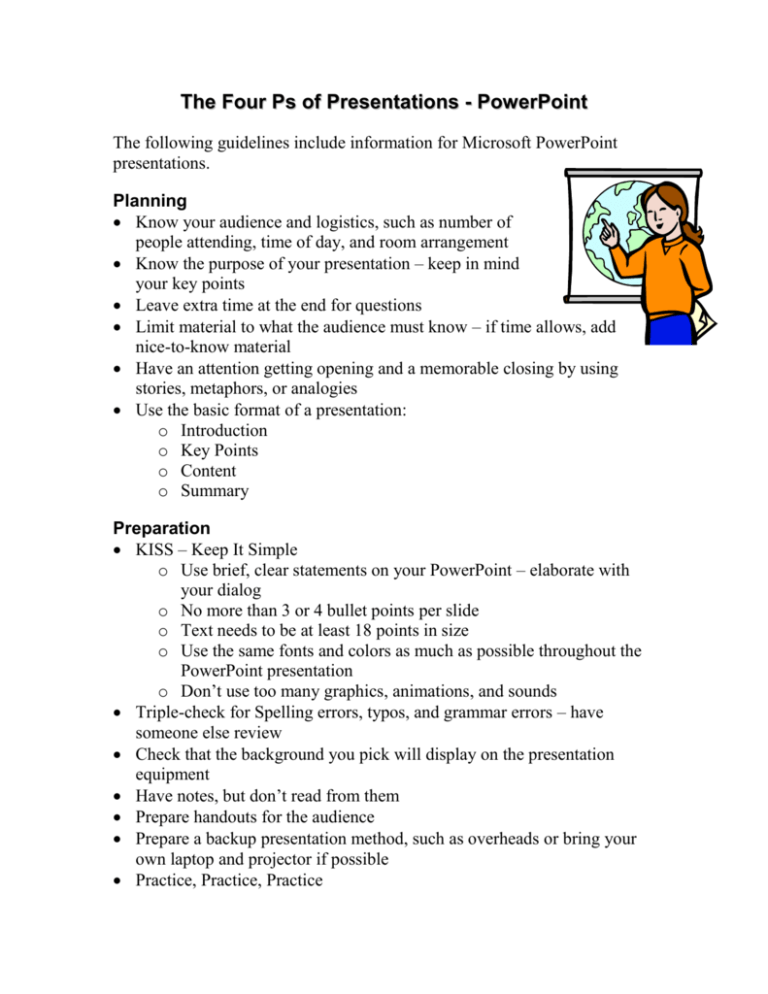
The Four Ps of Presentations - PowerPoint The following guidelines include information for Microsoft PowerPoint presentations. Planning Know your audience and logistics, such as number of people attending, time of day, and room arrangement Know the purpose of your presentation – keep in mind your key points Leave extra time at the end for questions Limit material to what the audience must know – if time allows, add nice-to-know material Have an attention getting opening and a memorable closing by using stories, metaphors, or analogies Use the basic format of a presentation: o Introduction o Key Points o Content o Summary Preparation KISS – Keep It Simple o Use brief, clear statements on your PowerPoint – elaborate with your dialog o No more than 3 or 4 bullet points per slide o Text needs to be at least 18 points in size o Use the same fonts and colors as much as possible throughout the PowerPoint presentation o Don’t use too many graphics, animations, and sounds Triple-check for Spelling errors, typos, and grammar errors – have someone else review Check that the background you pick will display on the presentation equipment Have notes, but don’t read from them Prepare handouts for the audience Prepare a backup presentation method, such as overheads or bring your own laptop and projector if possible Practice, Practice, Practice Presentation Face the audience – don’t talk to the screen or the computer Stand where you are accessible to the audience – stand to the side of a podium instead of behind it, if possible Make eye contact with the audience Be enthusiastic Use hand gestures, but don’t pace back and forth or make nervous gestures Speak clearly and slowly, but not in a monotone voice Use Pauses to emphasize key points Avoid filler words such as “um”, “and uh”, “you know”, “like”, and “ok” When using a laser pointer, turn it off after pointing to the item you want to emphasize. If you leave it on while talking, you will probably point to incorrect items and distract the audience. Dress appropriately for your audience – most of the time this should be professionally Ask questions and involve the audience as much as possible Don’t be too casual or personal Be aware of the audience’s response to you. If they start nodding off, change how you are presenting by moving to a different location, speaking with more emphasis, telling a story, using more hand gestures, etc. Post-Presentation If you will hold a question and answer session at the end, let the audience know at the beginning of your presentation Repeat questions so that everyone in the audience can hear Try to anticipate questions that might be asked and be prepared to answer them. Provide the audience with a method of reaching you

